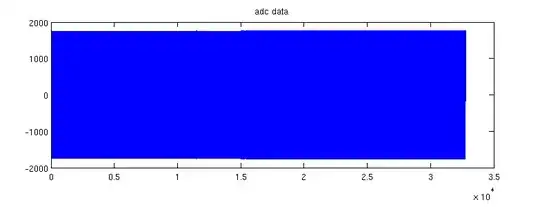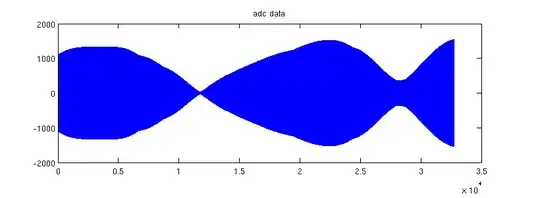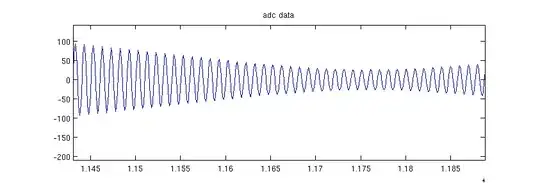I am using a 12-bit 6.4Mhz ADC to record a sensor reading.
It's an ultrasound doppler system. A DAC is used to generate a TX frequency, that frequency is bounced off a moving target and received via an ultrasonic sensor.
In my testing environment, the amplitude of this reading is fairly consistent over time:

However, when the sensor is installed on site, I see this weird amplitude-modulation type interference:
I'm familiar with interference where additional frequencies are received/interfere with the recording, however I don't know what causes this, where the amplitude seems to drop out at points.
I'm not even sure what this is called, does it have a name? and, more importantly, what would cause this behaviour?
More info:
This isn't a display artefact. Zoomed in on one of the "zero crossings":
I even reproduced this in Matlab by mixing the adc data with a sinusoid of 200 Hz.
The top of each of the two FFT peaks has two separate frequency maxes instead of one.


